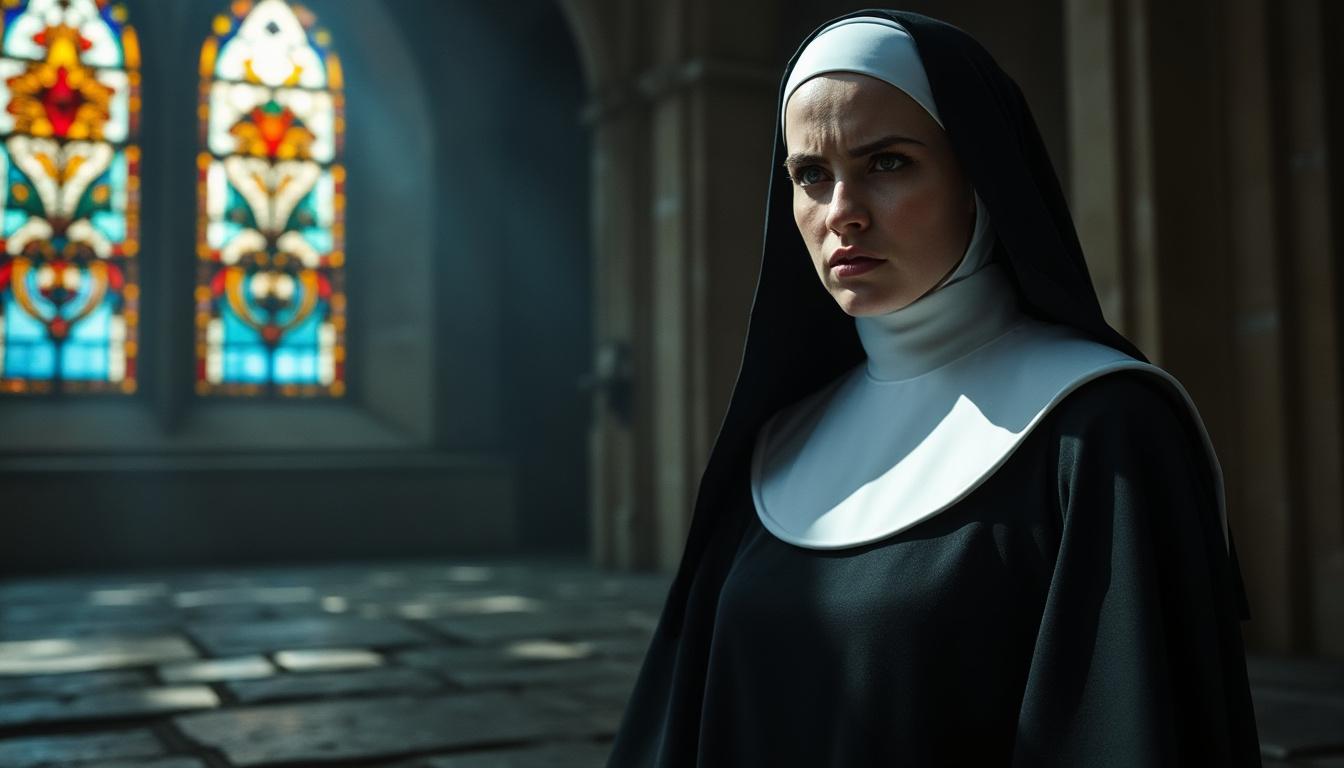Few films capture the complex and often dark layers of the human psyche quite like Saint Clare. A psychological thriller that dives deep into the mind of a seemingly ordinary teenager turned serial killer, it stars the talented Bella Thorne as Clare Bleecker. The narrative challenges traditional representations of killers in cinema, providing a nuanced look at mental health, empathy, and moral ambiguity. As the film gears up for its anticipated release on July 18, 2025, audiences are intrigued not only by the plot but also by Thorne’s transformative performance and the insights it brings to the crime drama genre.
Bella Thorne’s Immersive Approach to Clare Bleecker
To succeed in portraying Clare Bleecker, Thorne embarked on a rigorous journey of character analysis that blurred the lines between reality and her character’s chilling existence. Clare is struck by visions that compels her to eliminate those she views as morally corrupt. This internal conflict was the crux of Thorne’s approach, as she aimed to breathe life into a character that defies simple categorization. Her character feels empathy— a trait not often associated with serial killers.
Much of the intricacy of Thorne’s performance stems from her commitment to understanding the nuances of mental health. By diving into the psychology behind her character, she was able to illustrate the complex layers that define Clare. Thorne explained that finding Clare was akin to “faking being able to fake” a normal human being while navigating the depths of what makes a person deviate from societal norms.
The film is based on Don Roff’s novel Clare at Sixteen, which adds an additional layer of depth to the character’s origin. Thorne emphasized the importance of this source material, stating: “You can’t start at the film script.” By incorporating elements from the book, the film is able to stay true to Clare’s complicated journey of maturation, which further deepens the narrative’s psychological exploration.
Engaging in extensive discussions with the director, Mitzi Peirone, proved pivotal for Thorne in crafting Clare’s persona. The dynamic process of collaboration helped bring out the human side of Clare, showing her as more than just a collection of psychopathic tendencies. Instead, she is painted as a deeply troubled individual shaped by her past, illustrating the fragility of the human psyche.
- Character Traits: Clare’s journey showcases instances of loneliness, confusion, and conflict
- Acting Techniques: Method acting combined with physical stunts to portray Clare’s psychological complexity
- Mental Health Representation: The film seeks to humanize mental health struggles rather than demonize them

The Theme of Isolation in Saint Clare
Isolation plays a significant role in the development of Clare’s character. Living in a small town, she experiences profound solitude that fosters her descent into darkness. This narrative choice raises essential questions about societal neglect and the consequences of isolation on mental health. Clare’s transformation from an innocent teen to a killer serves as a stark reflection of the dangers that stem from unseen struggles.
The film’s poignant exploration of isolation challenges viewers to contemplate how lacking community support can lead to tragic outcomes. Through Clare, audiences can appreciate the importance of empathy and understanding towards those breaking down under pressure. Various scenes depict her suffering in silence, leading to her ultimate unraveling.
Moreover, as Clare grapples with her dual existence—the devout student vs. the bloodied assassin—the dichotomy highlights the tension between external expectations and internal realities. This ongoing battle is visually represented through Thorne’s performance, where body language and expressions shift dramatically between her two selves.
- Emotional Isolation: Clare’s character experiences a disconnect from those around her
- Societal Critique: The film scrutinizes how communities often overlook mental health issues until they manifest violently
- Visual Storytelling: Cinematography and music underscore Clare’s isolation
Acting Techniques and Role Preparation for Saint Clare
Thorne’s preparation for her role in Saint Clare required her to adopt unique acting techniques aimed at conveying the psychological struggles of her character. This film marks a significant evolution in her career, moving beyond her previous roles and delving into darker themes. In order to connect genuinely with Clare, Thorne immersed herself in research about serial killers, studying their behavior and motivations.
This prepared her to portray a young woman who is not only grappling with violence but also their inner ethical dilemmas. Thorne took particular care in developing the emotional backbone necessary to understand Clare’s journey. During interviews, she revealed how understanding the character’s motivations was key: “She feels empathy, so she’s not a psychopath,” Thorne elaborated. This crucial distinction influenced how she approached each scene and the emotions she needed to express.
In some instances, she employed method acting techniques that required emotional recall. Whether recalling moments of vulnerability or intensity, Thorne anchored her performance in genuine emotion, ensuring a relatable yet haunting portrayal.
| Acting Technique | Description |
|---|---|
| Method Acting | Immersing in character’s emotions to evoke genuine reactions |
| Research Study | Exploring the psychology of serial killers to inform performance choices |
| Physical Stunts | Incorporating rigorous physicality to represent internal conflict |
Thorne’s dedication to embodying Clare fully also involved practical preparations, including executing choreographed stunts, which she revels in. Her affinity for physical expression lends a visceral edge to Clare’s transformation, reflected in gripping action sequences throughout the film. These elements perfectly harmonize to create a layered and compelling character.

The Implications of Clare’s Actions on Mental Health Awareness
The choices Clare makes throughout the film open discussions about broader implications regarding mental health in society. By portraying a character that defies the stereotype of a deranged killer, Thorne highlights the urgent need for dialogue surrounding mental health and empathy for those grappling with their inner demons. Clare’s experiences reinforce the idea that serial killers aren’t born; they are often made by circumstances that push them beyond their breaking points.
This aligns with a significant shift in the film industry’s approach to telling stories about violence. Increasingly, filmmakers are not merely romanticizing or sensationalizing violence; rather, they are dissecting the motivations behind these acts. Saint Clare stands poised to challenge audiences to reflect on the compassion needed for understanding individuals in similar situations. The film ignites discourse around empathy, healing, and the necessity of community support.
Furthermore, Thorne’s performance allows viewers to see the necessity of accessibility to mental health resources. It calls for society to address the often underreported issues of trauma and psychological distress. By placing mental health awareness at the forefront, Saint Clare provides an invaluable lesson nestled within a gripping psychological thriller.
- Empathy in Storytelling: Highlighting the emotional struggles behind the actions
- Community Responsibility: Reinforcing the importance of understanding mental health
- Film’s Role: Exploring the societal impact of mental health narratives in cinema
Future Possibilities: Potential for a Sequel
The complex layers of Saint Clare undoubtedly leave the audience craving more. Thorne expressed enthusiasm about the potential for a sequel to continue Clare’s journey. With two additional books in the Clare series, there’s a wealth of material ready to be fleshed out on the screen. The continuity of Clare’s character evolution can lend itself to extending the sociocultural discussion initiated by the film.
According to Thorne: “There’s obviously more story that could be told,” signaling the shared interest in delving back into Clare’s chaotic world. As the story moves beyond the confines of her small town, audiences are left to wonder about the challenges and moral dilemmas that lie ahead. Following Clare as she grapples with her identity amidst her violent tendencies presents a unique opportunity for filmmakers to engage further with mental health themes.
By exploring the consequences of Clare’s choices and her psychological landscape, a sequel could enhance the film’s commentary. A deeper dive into Clare’s past, the societal reactions to her actions, and the question of redemption could all create rich narrative threads ripe for exploration. Moreover, it could allow others to join the conversation on the consequences faced by those fighting their demons.
| Potential Sequel Themes | Discussion Points |
|---|---|
| Redemption Arc | Can Clare find redemption, or is she lost forever? |
| Camping in Society | How will society respond to her actions moving forward? |
| The Past’s Shadow | How do Clare’s childhood experiences shape her future? |
In conclusion, the anticipation surrounding Saint Clare extends beyond simple viewing pleasure; it is an invitation to engage with broader societal themes of empathy, mental health, and the narrative devices of film that enrich our understanding of the human condition. As audiences eagerly await the release on July 18, 2025, Bella Thorne’s portrayal of Clare promises to highlight the gripping intersection of horror and humanity.


